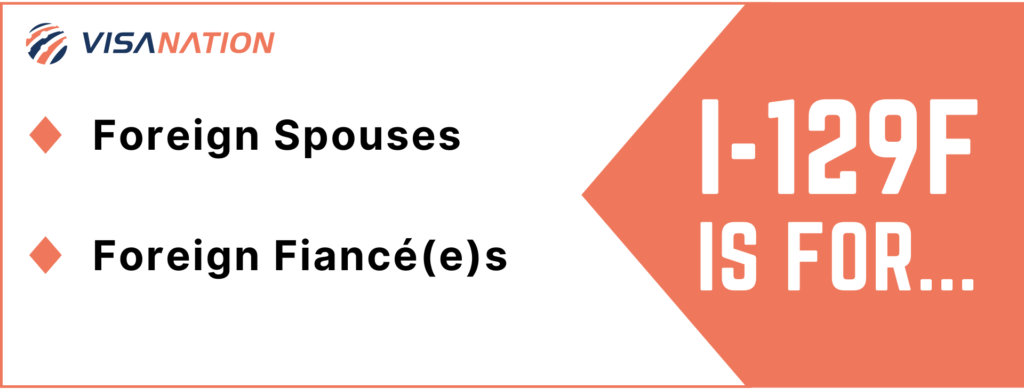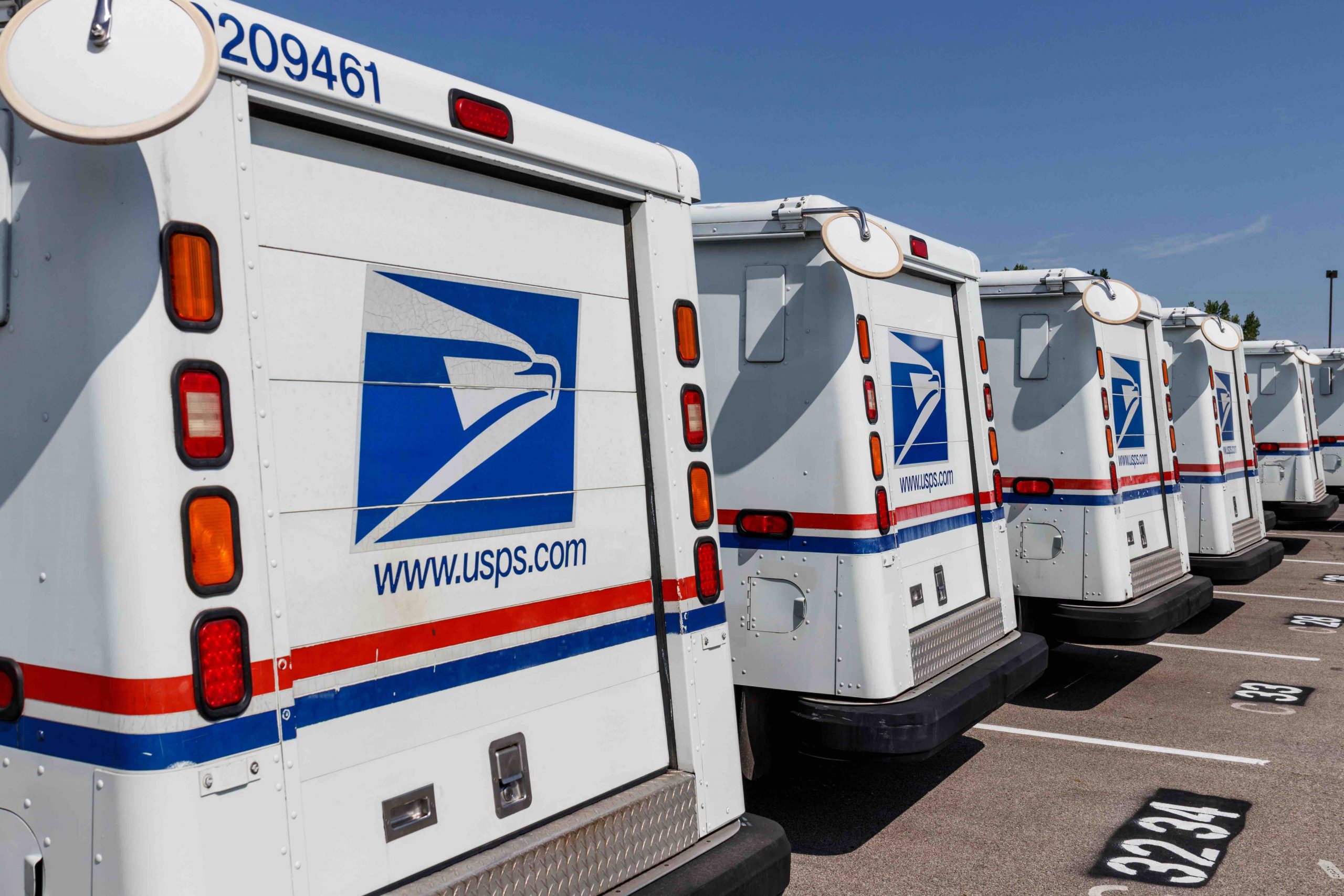I-129F Form: Learn to Submit It The Right Way
It is very common for people to bring their fiancé(e) or spouses to the U.S. To do so, they need to comply with the rigid immigration rules, which in such cases, begin with the completion of the I-129F form. The I-129F form is the foundation to later receiving permanent residency in the U.S. via a green card.
In this article, you will learn the details of the I-129F visa. You will encounter matters like:
- How long it takes to process the I-129F;
- Where to file the I-129F form; and
- How to assemble the I-129F package and what documents to submit with I-129F.
What Is Form I-129F?
The I-129F form is the starting point for submitting a petition for a K-1 visa for a U.S. citizen’s fiancé(e) or a K-3 visa for the spouse of a U.S. citizen that is willing to enter the country. The form is used by the U.S. Citizenship and Immigration Services (USCIS) agency to check whether a qualifying relationship is in place between a U.S. citizen and their partner. The partner’s immigration visa should receive approval and entry permission if the answer is positive. Form I-129F is also known as the “Petition for Alien Fiancé(e)” and is available to download as a Form I-129 PDF file.
For context, the U.S. allows citizens to bring their fiancé(e)s or spouses to the country for the purpose of marriage. There is a K-1 ((fiancé(e)) and K-3 (spouse) visas, whereby the former allows a fiancé(e) to enter the country for 90 days and marry within that period. K-3 is for those awaiting approval on their immigration petition who wish to enter the U.S. and await the decision on their green card application. This is where I-129F comes into play.
Form I-129F Eligibility
The I-129F eligibility is as follows:
- The petitioner, who can only be a U.S. citizen, will submit the I-129F for their fiancé(e) to enter the U.S.;
- The petitioner must have met their fiancé(e) in person in the two years before the petition is triggered; and
- For spouses of U.S. citizens, with approved Form I-130 petitions, the petitioner can also file I-129F petitions for their spouses to apply for a green card.
- Two possible exceptions are allowed under the “in-person meeting in the last two years” rule: where the meeting would have been an extreme hardship for the petitioner and where a meeting between the fiancé(e) and the petitioner risks breaching foreign tradition and/or customs.
- Where the petitioner applies through the I-129F form for their fiancé(e) to join them in the U.S. and marry within 90 days, the fiancé(e) will receive the K-1 visa. Please, be wary that even if everything is well-completed in the I-129F document, for a K1/K3 visa to be issued, the International Marriage Broker Regulation Act has further anti-domestic violence standards that need to be met to grant the visa.
I-129F Instructions – Step By Step
The I-129F instructions are primarily self-explanatory and straightforward. However, you should pay particular attention to the following parts and questions:
- Part 1 – in this part, you will answer questions about yourself – the petitioner. You will have to state your address, employment history, citizenship information, and Social Security Number. You will also be asked a range of personal questions that you must answer.
- Part 2 – in this part, you will be asked about your beneficiary – your spouse or fiancé(e). Questions are very similar to the ones in Part 1.
- Questions 43-49 – a positive answer to these questions on sponsoring more than one I-129F person from abroad can raise suspicions of fake/organized marriages and possible human trafficking. These schemes are common. Foreign-born people pay U.S. citizens to act as the petitioner in order to facilitate immigration or vice versa for exploiting immigrants. USCIS will investigate K-1/K-3 and I-129F applications to prevent potential suspected illegal activities.
What Documents To Submit With I-129F
The I-129F form itself is not sufficient enough for a K-1 or K-3 visa approval, so make sure to use this section to review what documents you have to submit with the form. Do not submit original paperwork, but rather assemble copies of your I-129F supporting documents listed in the checklist table below.
I-129F Checklist
What documents to submit with your I-129F: The Ultimate Checklist.
The Essentials:
- U.S. citizenship proof, ex. a birth/naturalization certificate, a passport copy.
- A passport-styled photograph of the petition and their partner, taken no longer than 30 days after filing I-129F.
- An I-129F cover letter outlining the reason for the petition and how you met your fiancé(e) – detail where, when and how the relationship developed. Provide details of your current location and that of your soon-to-be partner.
- If applicable, proof of name changes.
- If applicable, proof of terminating previous marriages. This is relevant to both the petitioner and their spouse. Documents can range from divorce decrees to death certificates.
- If applicable, police paperwork and court records for criminally convicted U.S. citizens (petitioners). Note that convictions for certain crimes against minors would make your I-129F inadmissible. Further reference is available under the Adam-Walsh Child Protection and Safety Act o 2006.
|
Essentials for a K-1 visa |
Essentials for a K-3 visa |
|
Proof of marriage plans within 90 days of the fiancé(e)’s arrivals |
|
|
Proof of an in-person meeting within the last two years (ex. dated photos, plane tickets and spending receipts), unless covered by an exception (ex. letters by religious leaders or medical practitioners advising not to travel) |
Form I-797C receipt notice copy (returned as a response to Form I-130) |
|
Proof of an I-129F intent to marry letter – a mere I-129F witness statement would suffice, though other evidence includes marriage arrangement correspondence (cards, telephone, emails, letters etc.), signing marriage arrangements contracts (renting a venue/hall, contracting religious services and catering, etc.) and wedding announcements |
Any original documents in foreign languages must be translated and certified as copies of these translations will be requested.
Petition for Alien Fiancé(e) Timeline
The timeline includes:
- The time it takes you to make the decision to petition under I-129F and gather the necessary supporting documents. Unlike other mini-timelines, you can control this one;
- Around 8 months for your I-129F to process;
- 6 to 10 months processing time for a K-1 visa and 3 to 13 months for a K-3 visa;
- 3 months until being interviewed for K-1;
- A 6-month entry timeframe after K-1 is granted; and
- A maximum of 90 days to marry your fiancé(e) after their arrival.
I-129F Processing Time
The I-129F processing time can vary depending on the Service Center that is delegated to process your I-129F petition. On average, it is reported that 8 months is a realistic expectation for USCIS to decide. 13 months is what is set as the general maximum, so beware that the authorities tend to work at a faster pace than anticipated.
Some applications are processed faster than others. The Nebraska Service Center and the Potomac Service Center are the promptest in their response, taking just 4.5 months for I-129F processing. The Vermont Service Center needs 5.5 months to update the petitioner, whereas the Texas Service Center – 13 months. California Service Center holds the record for the I-129F processing time with 13.5 months.
What Is The Form I-129F to Green Card Timeline?
First and foremost – congratulations. Thinking about this question means you have been approved for your I-129F petition. This means that the fiancé(e)/spouse must now apply for their preferred visa (K-1 or K-3) and follow standard procedures.
Regarding I-129F leading to a K-1 visa, the petitioner’s fiancé(e) will need to make their way to the U.S. within the next 6 months and marry the petitioner within 90 days of their arrival. The now U.S. citizen spouse will need to file Form I-485 to receive their spousal green card.
K-3 spousal applicants can save themselves some time by applying for consular processing directly instead of a green card. Timewise, there is no difference, though this is slightly less expensive, and the recipient can start to work in the U.S. upon receiving it.
Form I-129F Costs
The I-129F filing fee is $535, which is a non-negotiable sum. Understandably, the process may not be the most financially viable for every petitioner. Whilst the state authorities offer no fee waivers, possible funding assistance may come from legal aid organizations and relatives or friends.
What Happens After?
From the point of the recipient and their partner, the next several months will become a time of waiting for approval of the petition.
Two things to remember are to review the approximate processing time and regularly check your mail. The petitioner cannot file I-129F online, so paper application and the I-129F supporting documents need to be mailed to the I-129F filing address(es) listed below. You will receive a USCIS I-129F receipt notice visa mail. You must remember to keep a record of your 13-digit reference number. You can track updates on your I-129F status at any time.
Frequently Asked Questions
Below you will find answers to some commonly asked questions about I-129F.
How long does it take for the Petition for Alien Fiancé(e) to be approved?
This question probably provokes the most anxiety amongst petitioners. 13 months is the maximum I-129F processing time, though it seems that petitioners commonly discover the outcome of their petitions after 8 to 8.5 months post-submission.
What is Petition for Alien Fiancé(e) used for?
Petition for Alien Fiancé(e) acts as the precursor to a K-1 fiancé(e) or a K-3 spouse visa. Essentially, it is intended to launch a petition to bring the partner of a U.S. citizen to the U.S. The fiancé(e) would have to marry the petitioner within 90 days of crossing the border or the spouse wait for a final update on a green card application, respectively for K-1 and K-3. So, the Petition for Alien Fiancé(e) becomes the “administrative backbone” to the successful visa application of the petitioner’s partner.
Where to send the fiancé(e) application?
The USCIS fiancé(e) filing address below is where the petitioner needs to send their fiancé(e) application after checking what documents have to be submitted:
U.S. Postal Service (USPS):
USCIS
Attn: I-129F
P.O. Box 660151
Dallas, TX 75266-0151
FedEx, UPS, and DHL deliveries:
USCIS
Attn: I-129F (Box 660151)
2501 South State Highway 121 Business
Suite 400
Lewisville, TX 75067-8003






